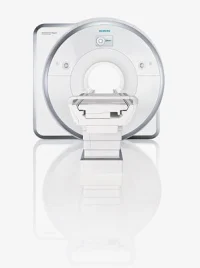Healthcare professionals are becoming increasingly convinced of the benefits of personalised medicine (PM), a patient-centred approach in which the patient receives the right treatment at the right time. Radiologists should fully understand how this new idea will influence their work in the coming years, said Professor Gabriel P. Krestin, president of the European Society of Radiology (ESR), during the ECR Opening Press Conference.
“The principles of PM have the potential to become the dominant strategy in clinical healthcare in the relatively near future, which would see the focus of the medical world gradually shifting away from the current system of disease care, towards an approach based on prediction and prevention. PM will allow for the stratification of patients into different disease risk groups and very individualised decisions on disease prevention and treatment,” said Krestin, who chairs the department of radiology at Erasmus MC, University Medical Center Rotterdam, the Netherlands.
Most radiologists already know of the concept of PM, and medical imaging is among the most personalised aspects of healthcare. But experts agree on the need for more awareness of the exact nature of this new paradigm, specifically the need for recognition of the role that medical imaging should play. Speakers at the Professional Challenges Session on Saturday will present the core principles of PM and highlight the factors that radiologists need to consider in order to adapt their approach to training, clinical practice and research.
“The whole idea of PM, and the role of imaging within it, is relevant to all of us. This concept will have an increasing influence on the way we work as radiologists. I think many people have heard of PM, but certainly not everyone will have a sound conception of exactly what it is or its full implications for imaging and our daily practice. To be aware of this, and the possibilities that will probably multiply in the coming years, is very important,” Krestin said.
Advances in genetic and molecular science and technology have boosted the development of PM. Numerous biological changes and disease indicators, biomarkers, can now be identified and quantified often before symptoms occur, raising the ability to predict and therefore prevent disease. Application of the same technology to the monitoring of treatment response means that therapies can now be tailored to the individual, to an extent far beyond traditional capabilities.
Radiology remains a key ally in the practice of PM, as many biomarkers related to preclinical or asymptomatic development of disease can be visualised with imaging. Imaging can also provide additional individualised information that cannot be obtained by other means, such as the precise location and extent of disease, the possible involvement of adjacent structures, and characteristics such as perfusion, flow, metabolism and diffusion within the diseased tissues. Such information can be used to precisely choose, direct and monitor treatment of disease.
Raising awareness of PM, and the role played by imaging within it, has become a priority for the ESR, which recently set up formal relationships with the European Association for Predictive, Preventive and Personalised Medicine (EPMA) and the European Alliance for Personalised Medicine (EAPM). The aim is to promote medical imaging in the field of predictive diagnostics, targeted preventive measures and personalised patient treatment.
Many things remain to be done, including changing education systems appropriately by integrating elements of predictive and personalised medicine at universities, updating clinical guidelines, informing all kinds of healthcare-related organisations, providing expert recommendations, and trying to stimulate the political decisions at the top of the chain.
Latest Articles
Imaging, #ECR2013, Personalised, Medicine
Healthcare professionals are becoming increasingly convinced of the benefits of personalised medicine (PM), a patient-centred approach in which the patient...









